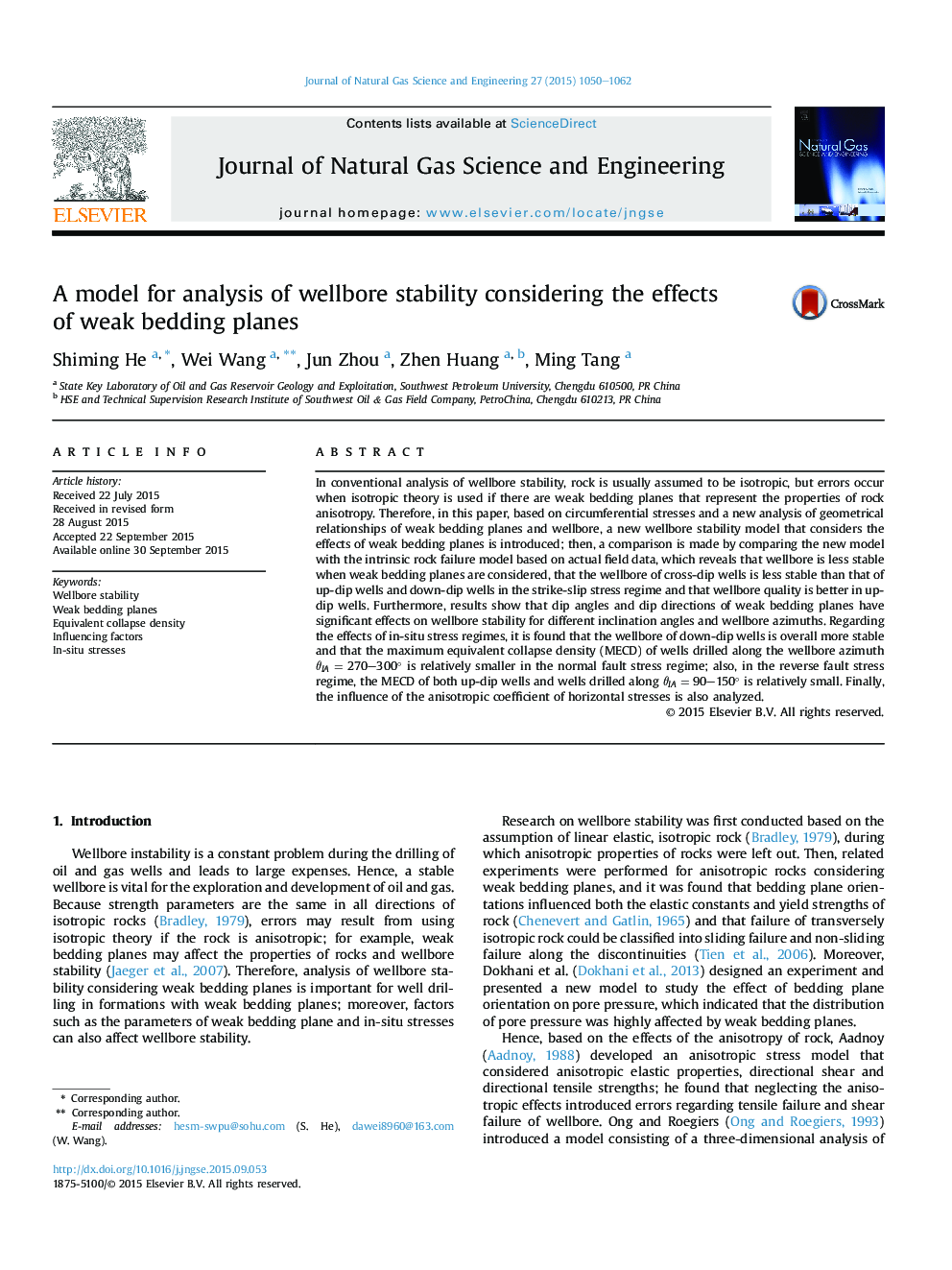| کد مقاله | کد نشریه | سال انتشار | مقاله انگلیسی | نسخه تمام متن |
|---|---|---|---|---|
| 1757653 | 1019129 | 2015 | 13 صفحه PDF | دانلود رایگان |
• A new wellbore stability model considering weak bedding planes is introduced.
• The existence of weak bedding planes makes wellbore less stable.
• The dip angle and dip direction of weak bedding planes highly affect wellbore stability.
• Wellbore azimuths for low collapse pressures vary with in-situ stress regimes.
In conventional analysis of wellbore stability, rock is usually assumed to be isotropic, but errors occur when isotropic theory is used if there are weak bedding planes that represent the properties of rock anisotropy. Therefore, in this paper, based on circumferential stresses and a new analysis of geometrical relationships of weak bedding planes and wellbore, a new wellbore stability model that considers the effects of weak bedding planes is introduced; then, a comparison is made by comparing the new model with the intrinsic rock failure model based on actual field data, which reveals that wellbore is less stable when weak bedding planes are considered, that the wellbore of cross-dip wells is less stable than that of up-dip wells and down-dip wells in the strike-slip stress regime and that wellbore quality is better in up-dip wells. Furthermore, results show that dip angles and dip directions of weak bedding planes have significant effects on wellbore stability for different inclination angles and wellbore azimuths. Regarding the effects of in-situ stress regimes, it is found that the wellbore of down-dip wells is overall more stable and that the maximum equivalent collapse density (MECD) of wells drilled along the wellbore azimuth θIA = 270–300° is relatively smaller in the normal fault stress regime; also, in the reverse fault stress regime, the MECD of both up-dip wells and wells drilled along θIA = 90–150° is relatively small. Finally, the influence of the anisotropic coefficient of horizontal stresses is also analyzed.
Journal: Journal of Natural Gas Science and Engineering - Volume 27, Part 2, November 2015, Pages 1050–1062
